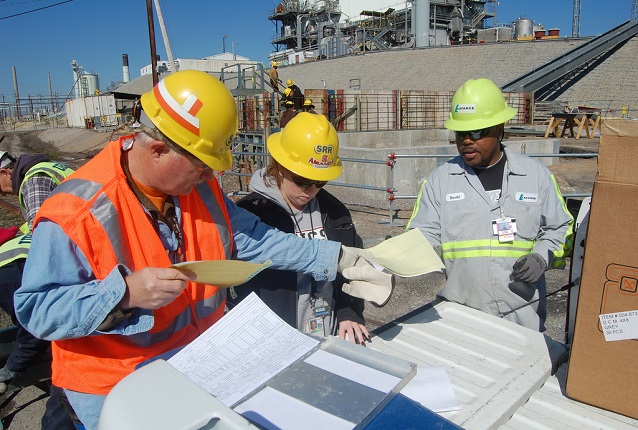In early June, President Trump strolled up to a podium and announced his intention to expand the Labor Department’s apprenticeship program. Trump pontificated about the important role apprenticeships play in matching working people with job training opportunities. Giving credit where credit is due, Trump was right. However, Trump’s words do not match what’s included in his proposal. Apprenticeships require an appropriate level of government funding and oversight to ensure corporations put the interests of apprentices ahead of their profits. Apprenticeships, if operated well, have immense value for working people in a range of industries, including construction, manufacturing, and healthcare. Programs run jointly by unions of working people and employers allow people to earn quality wages, benefits, and a hands-on, debt-free education.
And yet Trump’s proposal fails greatly on those counts. Trump’s apprenticeship program could lead to increased exploitation of apprentices, halt progress for women and people of color to move into good careers in construction and other sectors where they are underrepresented, and harm the futures of working people setting their sights on a sustainable career path.
Trump’s Budget Threatens Diversity in Apprenticeships
One key reason the president’s words ring hollow is that his proposed budget takes a machete to the Labor Department’s job training and apprenticeship programs. Trump proposed $90 million to fund apprenticeships, but requested an estimated $1.1 billion cut from pre-existing programs. Elected officials of both parties expressed serious concern over cuts to training programs. Trump’s plan would fund an estimated 450,000 apprenticeships, but the president believes he can fund 5 million apprenticeships. Simple math suggests those numbers do not add up.
Trump’s budget would harm efforts to achieving more diversity in access to apprenticeships, and thus more equality in sectors like construction, where women and racial minorities lack representation. He requested a 76 percent cutfrom the Women’s Bureau’s budget and eliminated 131 full-time jobs within the Office of Federal Contract Compliance. Historically, both divisions within the Labor Department promoted women, people of color, and veterans in apprenticeships to diversify the industry. As of 2010, women hold just 2.2 percent of craft positions in construction, and racial minorities are continually underrepresented in this sector. The Office of Federal Contract Compliance ensures federal contractors follow civil rights laws. If the federal government cannot hold federal contractors accountable, it opens the door for taxpayer-funded discrimination.
Apprenticeship Oversight and Funding Matter
Labor Department oversight ensures working people can access quality apprenticeships and that big corporations live up to their end of the bargain. Not only does Trump’s budget make that more challenging, but Trump also wants to allow big corporations to write the rules. New apprenticeships would be “industry certified” and would grant companies broad discretion for setting the benchmarks for what qualifies as quality standards. Many fear Trump’s proposal allows almost any company to create a registered apprenticeship with the federal government. As a result, taxpayer dollars could subsidize employers who offer apprentices low-wages and few educational opportunities.
Trump is set to axe a set wage schedule for apprentices. Currently, the Department of Labor mandates that apprenticeship programs eligible for government funding require that as apprentices gain new skills and work their way up the ladder, they earn more. While Trump’s program requires apprentices earn a wage for their work, it does not clarify if or when an apprentice receives a pay increase.
Apprenticeships can be Pathways to Stable Careers
Quality apprenticeships offer significant help to those looking for job training and a secure career. States and localities have made considerable progress in delivering on solid apprenticeship programs in recent years. Building Pathways is an example of an excellent municipal apprenticeship program, established as a partnership between local unions of working people, contractors, nonprofits, and the Housing Authority in Boston. Tyrell Ellis is one of many Building Pathways graduates who achieved stability at work and home. Before he joined Building Pathways, Tyrell struggled to make ends meet to raise his three daughters. Through Building Pathways, Tyrell secured an apprenticeship through the Sheet Metal Workers Local 17. Now he earns the income he needs to support his family.
At the state level, California’s apprenticeship program is a strong partnership between the state, industry, labor, and education. California’s design should serve as the standard for apprenticeship programs. Every registered program must meet minimum criteria, which the state monitors to ensure compliance. The 14-member California Apprenticeship Council oversees the program, which includes equal representation from businesses and advocates for working people. Nearly 64,000 Californians participate in apprenticeships in more than 560 registered programs.
How do we insist federal apprenticeship programs put working people first?
Labor Secretary Alexander Acosta recently announced the creation of an apprenticeship taskforce. The taskforce will create a series of goals for the federal apprenticeship program and deliver its findings to President Trump. Securing a seat for working people on the taskforce is a first step to ensuring apprentices have a stake in the future of programs that impact their futures. We know apprenticeships help working people across the country. Let’s make sure federally-sponsored apprenticeships do too.




